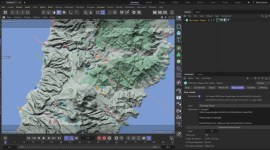
Beginner’s Guide to Premiere Pro Keyboard Shortcuts
Learning some fundamental Premiere Pro keyboard shortcuts will help kickstart your video editing experience. Let’s look at the basics.
Top image from Shutterstock
Whether you’re sitting down for the first time ever to edit video, or switching from one professional software application to another, learning how to use a nonlinear editing program can seem intimidating. Experienced editors will sometimes stay with an application they dislike just because they don’t want to spend time learning how to navigate a new one.
If you’re familiar with Adobe Premiere Pro’s interface, but you’re just not quite comfortable navigating it, learning a few keyboard shortcuts will help you out immensely. Let’s focus on a few fundamental Premiere Pro keyboard shortcuts, all of which are default keyboard shortcuts within the NLE.
Premiere Pro Shortcuts: J,K, and L
If you have any experience editing video, then you’re most likely already familiar with these three. The J,K, and L keys are your playback or SHUTTLE controls.
L is play. If you press L several times, your video will playback at a faster speed. K is stop. J plays your video in reverse. Just as with L, if you press J several times your reverse playback speed will increase.

Premiere Pro Shortcuts: I and O
These are probably my two most-used shortcuts. The I and O keys are for marking In and Out points on a clip.

Premiere Pro Shortcut: ` (Backtick)
The backtick key ( ` ) maximizes the panel which your cursor is currently hovering over. If you want to simply maximize the currently active panel, use SHIFT + `. You’ll find yourself using this shortcut a lot if you have bad vision or you’re editing on a small laptop.

Premiere Pro Shortcut: Cmd+K (Ctrl+K)
Cmd+K (Ctrl + K for PC users) will simply make an edit wherever your playhead is located. Simple and sweet.
Premiere Pro Shortcuts: Up and Down Arrows
Once you have clips in your timeline, the UP and DOWN arrow keys will help you quickly jump around between clips. The up arrow key will jump the playhead to previous edits on the timeline, while the down arrow key will jump to the next edit on the timeline. Make sure your track targeting is on, otherwise the up and down arrow keys may not work.

Premiere Pro Shortcut: M
The M key will set a Marker. Markers are useful for a variety of situations, including editing to musical beats and labeling areas of your timeline or individual clips. Pressing M while your playhead is over an existing Marker will bring up the Marker dialog box.
Premiere Pro Shortcut: F
F is for Match Frame, which helps you quickly locate a source clip from within your timeline. While in the timeline, simply press the F key to launch the clip in your source monitor, and adjust your In and Out points if needed.

Premiere Pro Shortcut: Cmd+M (Ctrl+M)
Once you’re all done with your edit, Command+M (Ctrl+M for PC) will bring up the Export Media dialog box. Then you’re ready to render out your final version.

Once you’re comfortable with these basic keyboard shortcuts, it’s easy to search for default shortcuts and customize your own layout for future use.
What are your favorite Premiere Pro keyboard shortcuts? Share your workflow tips in the comments below!







